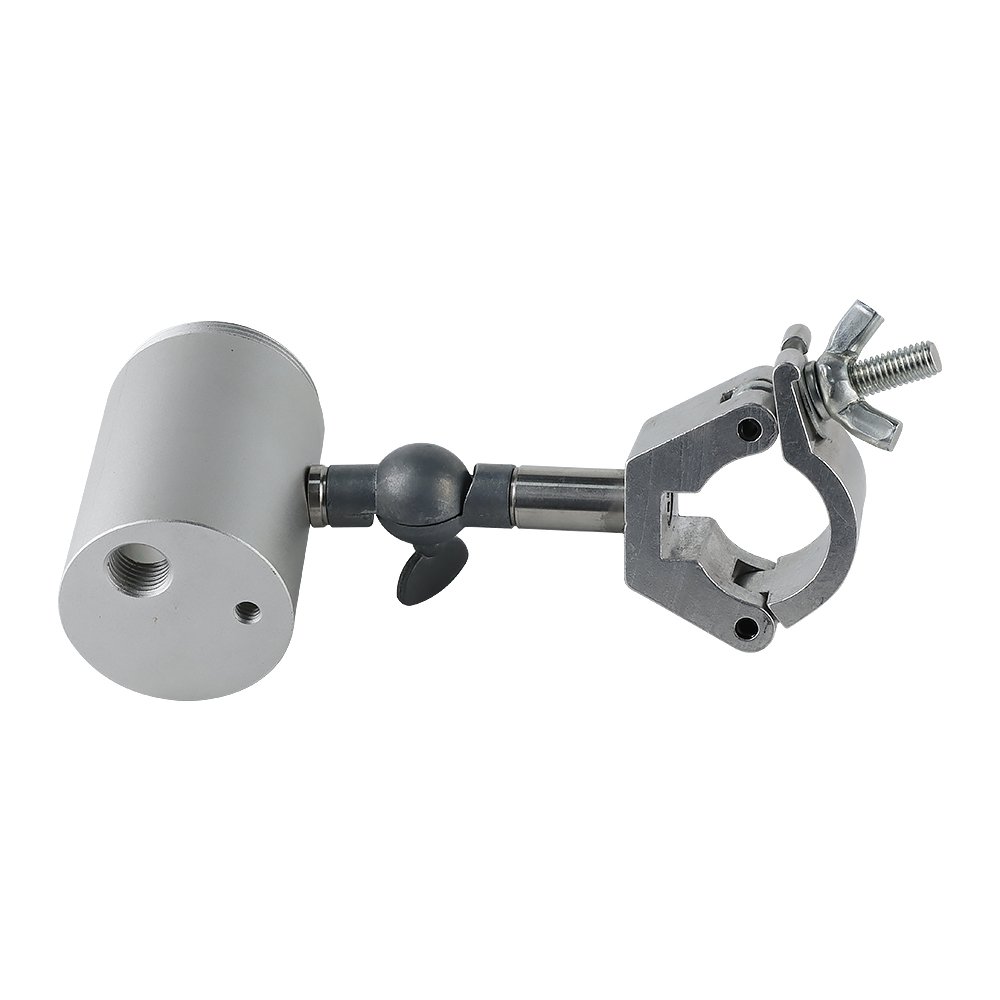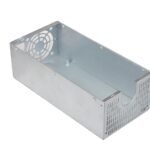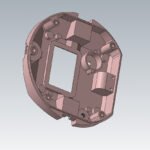Many CNC fixtures are used in the manufacturing industry as supporting devices that ensure conformity and interchangeability in all the parts produced. Fixtures are essential CNC machining tools to improve productivity and ensure high machining accuracy. In simple terms, the fixture can define as a device that supports and holds the workpiece of a tool in a machine.
Fixtures have the function of holding and aligning the cutting tool to the workpiece, but they do not hold the functionality of guiding the tool. Fixtures are of many types, including clamps, chucks, or metal plates. Fixtures should be designed in a way to withstand any machining pressure.
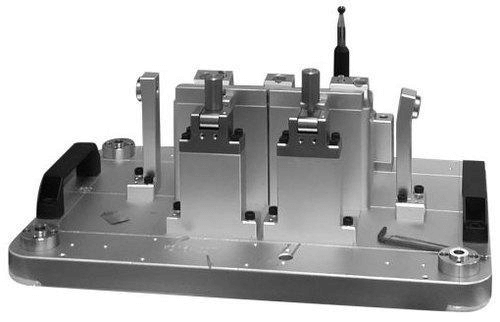
What are CNC Fixtures?
CNC (computer numerical control) fixtures are, in general, the devices that, during the cutting operations, hold CNC machined workpieces on CNC machines that may include router machines, mills, or laser cutters mainly. CNC fixtures have the function of keeping the parts very tightly during the cutting operations.
CNC fixtures work as helpful devices that ensure interchangeability, rigidity, and standardization during the overall manufacturing process. CNC fixtures help smoothen a production process; they are also called CNC work holding fixtures. CNC fixtures promote stability and positioning in the model of a workpiece in a CNC machine.
CNC Jigs (Fixtures)

Jigs hold devices responsible for maintaining, supporting, and locating the workpiece during a particular manufacturing operation.
This jig guides to guide the movement of a cutter. Jigs have the role of securing and holding the workpiece during a manufacturing process. Many people compare CNC fixtures with jigs because of the mutual function of providing stability. However, they both are different because CNC fixtures do not play any role in guiding the cutters.
Another distinguishing feature between jigs and CNC fixtures is the movement of the tool. CNC allows the movement of the workpiece. With jigs, the tools can remain stationary in their positions.
Applications of CNC Fixtures

CNC fixtures have a wide range of applications because of their benefits in the manufacturing industry. CNC techniques are mainly employed in CNC turning, slotting, milling, turning, and CNC grinding.
Some wide applications of CNC fixtures are enlisted below:
Position
The primary application of a CNC fixture is making sure the workpieces of a tool retain their positions and remain fixed during the production operation. Also, CNC fixtures make the machine surfaces according to the requirement. CNC fixtures also ensure the correct assembly of the parts of a tool.
Maintenance
CNC fixtures maintain the parts of a tool. They are responsible for the standardization and interchangeability of the workpieces of a CNC machine. CNC fixtures hold the features of a machine with grip and keep them together firmly.
Support
CNC fixtures provide extra support to the workpieces of a tool. CNC fixtures ensure conformity and interchangeability in the structure of a machine by providing stability.
Types of CNC Fixtures by Power Source
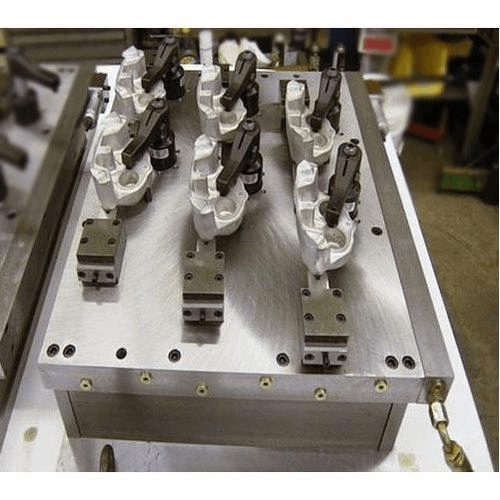
Based on their power source, CNC fixtures have the following types:
1: Manual Fixtures
Manual fixtures are used when the size of the components is enormous and the machining time for each of the components is also long.
2: Vacuum Fixtures
Vacuum fixtures are also known as vacuum chuck. They are helpful for products with thin bottom parts and large component sizes. Vacuum fixtures are also known for reducing the time for clamping. Vacuum fixtures also reduce distortion in the holding of thin filmed products that are highly sensitive.
3: Electric Fixtures
Electrical (light) fixtures are devices installed in house bulbs that connect them to electricity. Electrical fixtures can find in house wiring, outlets, tap adapter, etc.
4: Hydraulic Fixtures
Hydraulic fixtures use high-pressure liquids for holding the workpieces of a tool in place. Hydraulic fixtures are recommended over manual fixtures. A hydraulic fixture lowers cost and increases output; hence we can say hydraulic fixtures are a cost-effective type of CNC fixtures.
5: Magnetic Fixtures
Magnetic fixtures are distortion-free fixtures. Magnetic fixtures provide high precision and thus are highly useful in manufacturing operations.
6: Pneumatic Fixtures
Pneumatic fixtures are used for clamping and gripping the jaw faces on grips. They are beneficial in the maintenance of excellent clamping pressure.
Types of CNC Fixtures Based on the Applicable Machines
CNC fixtures have five types based on their machining operations. These are given below:
1: Turning Fixtures
These fixtures are commonly located on the nose of the machine spindle or faceplate. Turning fixtures should be accurately balanced. Also, a turning fixture should be light in weight and small.
2: Milling Fixtures
A cutting CNC machining process is named CNC milling. Milling fixtures are designed in a way that they have the frame to absorb chatter or vibration. Milling fixtures contain tenon strips at the bottom. Standard vises and clamps are included in milling fixtures.
3: Drilling Fixtures
The drilling process is quite famous in general and in CNC machining. It simply involves making a hole in the workpiece of a tool or bushing. CNC fixtures that we use in the drilling process are also called CNC. Some common types of drilling fixtures include plate fixtures, plate jigs, template jigs, plastic jigs, universal jigs, etc.
4: Boring Fixtures
As we have learned in drilling fixtures, drilling fixtures include making a hole in the workpiece. The boring process means enlarging the holes created in the CNC drilling process. The fixtures that we use in the boring process are also called CNC boring fixtures.
5: Grinding Fixtures
The CNC grinding process involves the removal of a part of the workpiece with the help of a grinder. The fixtures used in this process are named CNC grinding fixtures. CNC grinding is also one of the necessary CNC machining procedures. Two primary grinding fixtures are used for surface grinding and cylindrical grinding.
Above, we enlisted and elaborated the five types of CNC fixtures based on their machining operations. The name of the fixture also includes the function that the fixture performs.
Types of CNC Fixtures According to Their Uses & their Applications
CNC fixtures can also categorize based on their uses in the industry. We will discuss five significant types of CNC based on their usefulness in CNC machining operations. These five are detailed below:
1: Universal Fixtures
Universal fixtures have a wide range of applications and use in manufacturing operations. These fixtures are designed so that every part is adjustable and suitable for any workpiece. Universal fixtures ease the adjustment of any workpiece. Universal fixtures can use in both turning and milling machines.
2: Special Fixtures
A particular fixture is a CNC machining fixture ideal for a specific workpiece. Unique fixtures have a lot of benefits when it comes to providing stability to the workpieces. Special fixtures also make the machining process faster and a lot quicker also; they are convenient to use. Special fixtures are the best deal for irregular workpieces.
3: Assembled Fixtures
An assembled CNC fixture is the type of CNC fixture that can be molded and changed according to a particular workpiece. A special procedure does this. The assembled CNC fixtures have the flexibility to be removed or reused according to the need. This flexibility makes them highly helpful.
4: Modular Fixtures
Modular fixtures are CNC fixtures that add flexibility to the manufacturing process. Modular fixtures are easy to be reconstructed and reconfigured to be able to fit any workpiece.
5: Combination Fixtures
Combination fixtures are CNC fixtures that come in various shapes and sizes. They grip and control workpieces of different shapes and sizes.
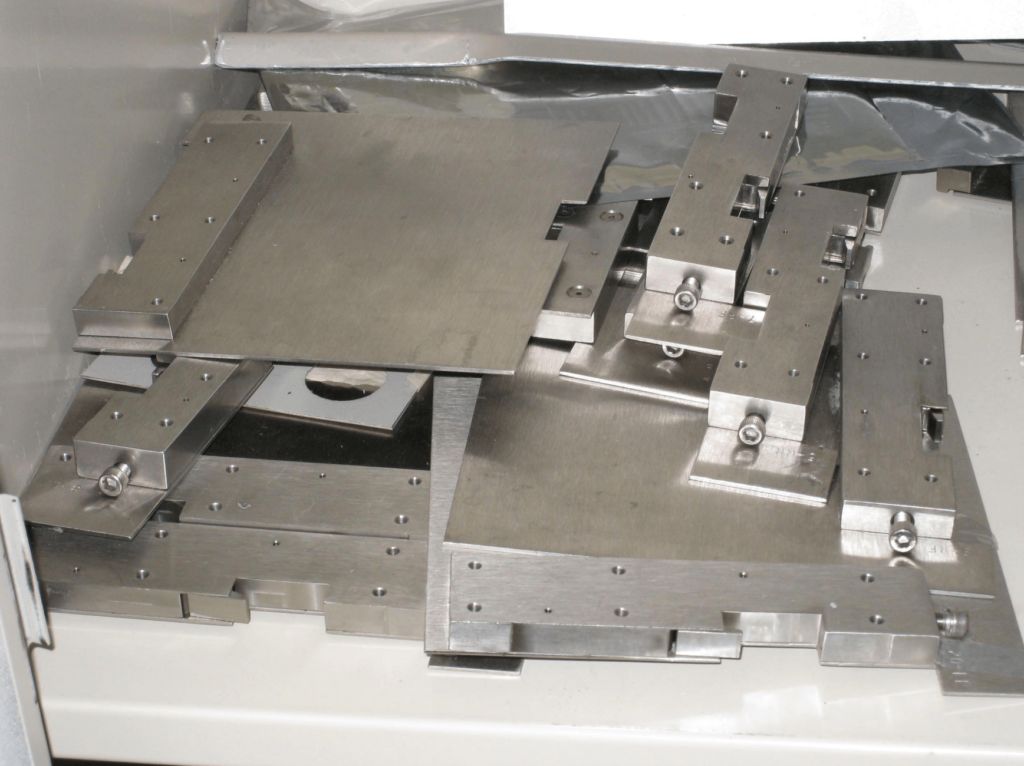
Considerations for the Selection of CNC Fixtures
There are a few things that we should keep in mind while using CNC fixtures in workpieces of a tool. These key considerations are helpful to some extent. These are briefly explained below:
- Keep the fixture as simple as it can be. The more complex we make the fixture, the more prone to error. Make CNC fixtures lesser so we can hold them down quickly.
- Make sure the fixture we are designing is what we need. Do not go for a complex or expensive fixture design when a cheaper fixture can fulfill our requirements. Economical fixtures chosen according to the tool life should be our priority.
- We are not applying a more significant clamping force on the CNC fixtures. This clamping force not only has the potential to harm our product but can also seriously damage our expensive fixtures or clamps.
- Always measure and calculate whenever you put a part on the machine to make the parts accurate.
Conclusion
CNC fixtures play an essential role in manufacturing CNC parts and clamp workpieces on machine tools. They can adopt high efficiency and high precision and single-piece production of CNC machine tools.
It is critical to learn about their types and functionality before starting a project. All the information as mentioned earlier can be helpful for you to select the best one according to your specifications. We have discussed all types of CNC fixtures based on their position, applicable machines, power sources, and uses, but if you can, any confusion and questions about CNC fixtures. We are happy to help you; please get in touch with us to quickly help.

